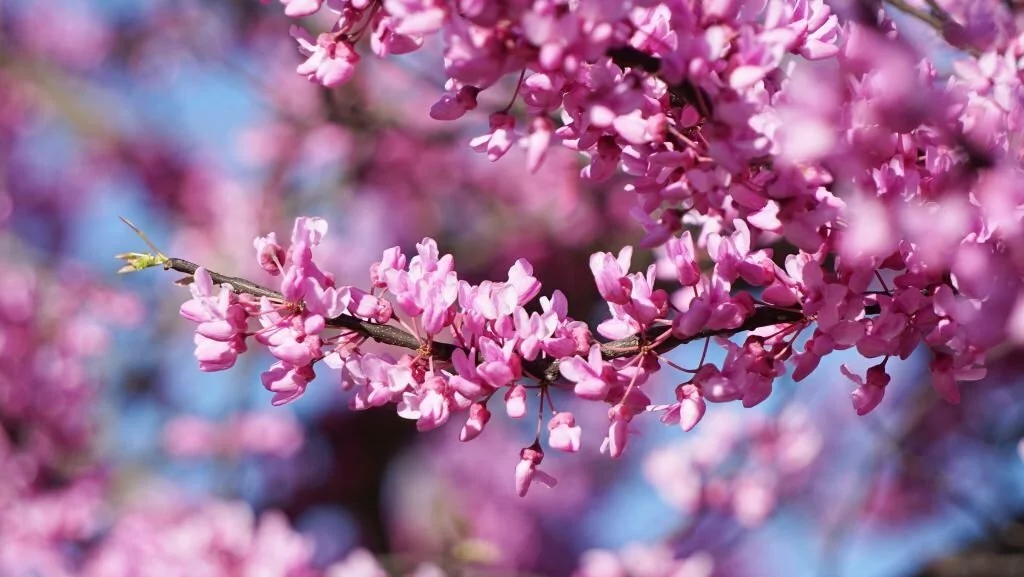The enchanting sight of redbud trees in full bloom is a true testament to the beauty of nature. Their delicate, heart-shaped leaves and vibrant pink to purple blossoms make them a favorite among gardeners and nature enthusiasts. However, one question that often arises in the minds of those who admire these trees is, “When does a redbud tree bloom”? In this article, we’ll delve into the captivating world of redbud trees and explore the timing of their magnificent blooms. Understanding when these trees burst into a riot of color is not only a matter of horticultural interest but also an opportunity to witness the magic of nature’s artistry. Let’s embark on this journey to uncover the secrets of redbud tree blossoms and the season when they grace us with their breathtaking beauty.
Introducing the Redbud Tree
Before we unveil the timing of redbud tree blooms, it’s essential to introduce these remarkable trees. Redbud trees, known for their charming heart-shaped leaves and striking pink to purple flowers, are a testament to the beauty of native and ornamental flora. These trees belong to the Cercis genus and are native to North America. They have earned their place as beloved ornamental species, and their blossoms are a herald of the changing seasons. The redbud tree’s unique aesthetic, featuring branches adorned with radiant flowers even before the leaves fully emerge, has made it a symbol of the arrival of spring. These trees are not only a treat for the eyes but also vital for the ecosystem, supporting pollinators and providing habitat for wildlife.
The Timing of Redbud Tree Blooms
The timing of redbud tree blooms is a subject of fascination, and it often aligns with the arrival of spring in North America. The exact time can vary depending on several factors, including the geographical location, climate, and specific variety of redbud tree. In general, redbud trees tend to bloom in early spring, typically between March and April. As the days lengthen, temperatures begin to rise, and the environment becomes more hospitable, these trees burst into a profusion of eye-catching blossoms. Their flowers appear before the leaves, which adds to their visual impact. The timing of redbud tree blooms is a spectacular herald of the changing season, a symbol of renewal and the promise of warmer days. It’s a moment that captures the hearts of nature lovers and garden enthusiasts alike, making redbud trees a cherished sight across North America.
Factors Influencing Redbud Tree Blooms
The timing of redbud tree blooms is influenced by various environmental and climatic factors. Temperature plays a significant role, with the trees requiring a period of winter chill to break dormancy. Once a certain number of chill hours have been accumulated, the tree begins its journey toward blooming. Daylight length also affects the timing of blooms; longer days and increased sunlight trigger the process. Adequate moisture is crucial for redbud trees to support healthy bud development, so spring rain or irrigation is often a key factor. Additionally, the local climate and specific regional conditions can influence the exact timing of redbud tree blooms. In warmer regions, blooming might occur earlier, while in cooler areas, it may be slightly delayed. Understanding these factors can help predict and appreciate the awe-inspiring moment when redbud trees burst into flower.
- Not Available for Sell in WA, USA
- A complete care package to maintain healthy and beautiful redbud tree.
- Promotes root development and the long-term vitality of all types of redbud.
- Includes Mycorrhizal Treatment, One Bag Premium Fertilizer (1.5 kg), and Biostimulant.
- Treats one large tree or 2-3 smaller or newly planted trees. Includes complete instructions.
Additional Varieties of Redbud Trees
While the Eastern Redbud (Cercis canadensis) is perhaps the most well-known variety, there are several other redbud tree species and cultivars that offer their unique blooming characteristics. The Oklahoma Redbud (Cercis reniformis), for instance, is a notable variety with large, glossy leaves and an extended bloom period, which can stretch into summer. The Texas Redbud (Cercis canadensis var. texensis) is known for its resilience in hotter and drier conditions, making it a popular choice for southwestern landscapes. Understanding these different redbud tree varieties can open up opportunities for selecting the one that best fits your garden’s unique needs and climate.
Caring for Redbud Trees to Promote Blooms
To encourage healthy and profuse blooms on your redbud tree, proper care is essential. Pruning, typically done during the dormant winter months, helps maintain a healthy shape and size for your tree, removing dead or crowded branches. Soil quality is also crucial; redbud trees prefer well-drained soil with good fertility. Adequate sunlight is essential, so make sure your tree receives enough light to support bloom development. When it comes to watering, consistent moisture is key, but avoid waterlogged conditions. A layer of mulch can help retain moisture and reduce weed growth. Fertilization should be done in moderation, as over-fertilization can negatively impact blooms. By taking these steps to care for your redbud tree, you can enhance its vitality and encourage the stunning blossoms that make these trees so beloved.
Conclusion
In conclusion, the timing of redbud tree blooms is a natural spectacle that captivates the hearts of all who appreciate the beauty of these remarkable trees. Understanding the factors that influence their blossoming, such as temperature, daylight length, and moisture, adds depth to the appreciation of this seasonal phenomenon. Different redbud tree varieties offer unique blooming characteristics, allowing gardeners to choose the one that suits their specific needs and region. Proper care, including pruning, soil quality, sunlight, and watering, is vital to promote healthy and abundant blooms. The blossoms of redbud trees are not merely a visual delight; they symbolize the arrival of spring and the renewal of life in the natural world. Embracing the wonder of redbud tree blossoms is an opportunity to connect with the rhythm of nature and celebrate the beauty it offers year after year.





